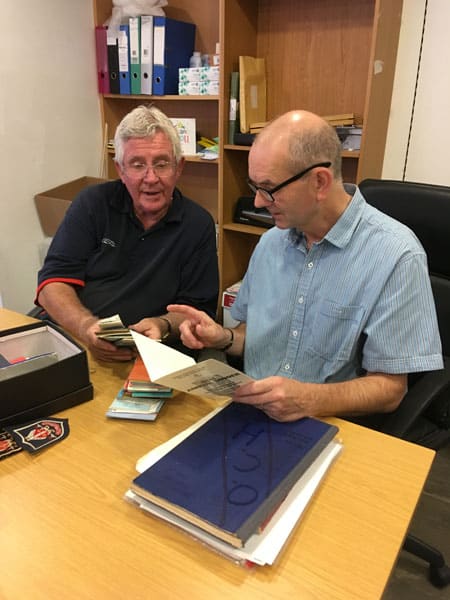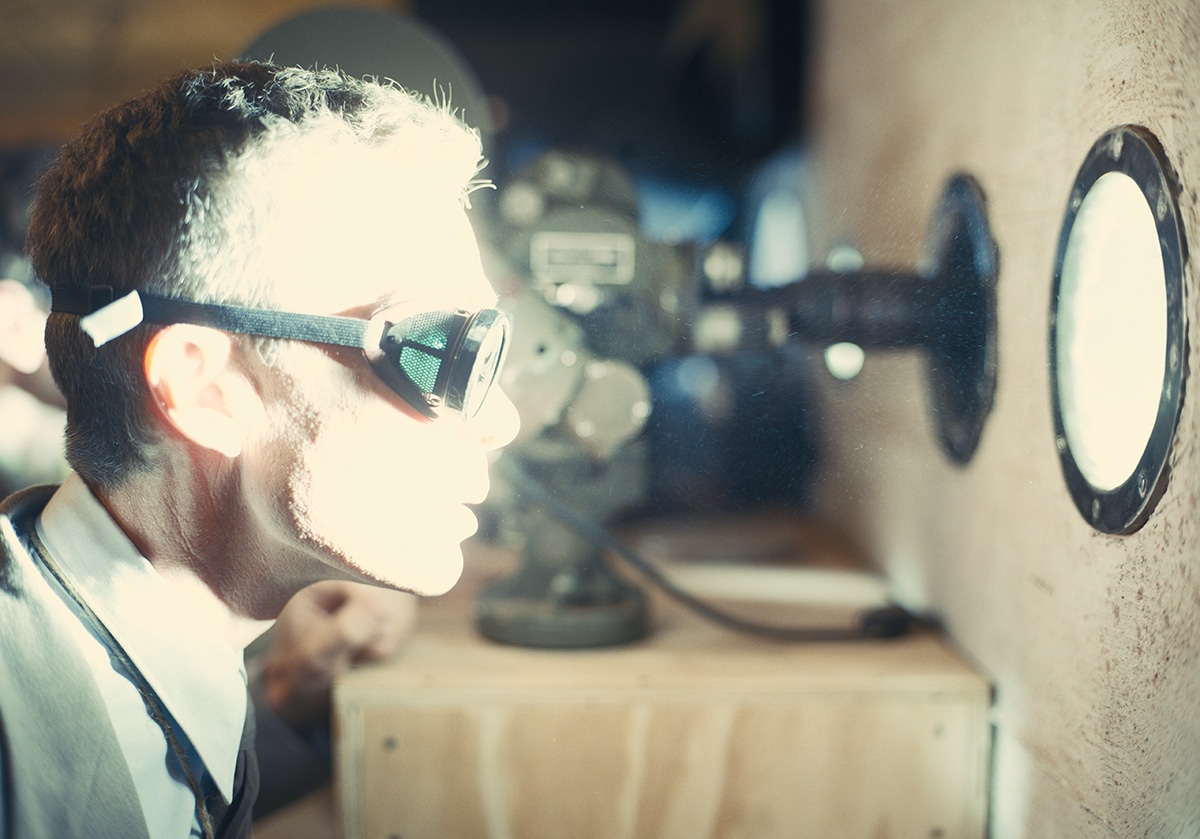In 1974, the International Hockey Federation (FIH) celebrated their fiftieth anniversary with a Congress in Belgium at the Uccle Club and the first exhibition match between two continents, Europe versus Asia, on 28 September.
By 1974, European sides had begun to break the dominance of the Asian nations in the men’s game. Since 1920 when Great Britain was victorious at the Antwerp Olympic Games, Asian nations had won nine Olympic gold medals (seven for India and two for Pakistan) and one World Cup (Pakistan in 1971). However, European nations had won the two most recent global tournaments: the Federal Republic of Germany (West Germany) emerged victorious at the 1972 Olympic Games in Munich and the Netherlands won the 1973 World Cup in Amstelveen.
Europe was ‘out of season’ in September when the exhibition match was held. They based their 15-man squad heavily on the two nations that had enjoyed most recent success against Asian opposition: the Federal Republic of Germany (FRG) (six players) and the Netherlands (five). Spain – the European Champions – provided two; Wales and the host nation Belgium provided one man each. The English sports journalist Patrick Rowley (later a founding trustee of The Hockey Museum) managed the side, which was coached by Horst Wein (FRG). Horst selected a 1-3-3-3 formation captained by Dutchman Frans Spits, the most capped player in the European team with 120 international caps. Notable amongst the European team was 21-year-old Ties Kruize (Netherlands) who had already been top goal-scorer in the last three major world tournaments. At the other end of the age spectrum was Peter Wilson (Wales) who was described as “Britain’s most skillful player” and was the oldest player on either side at 32.
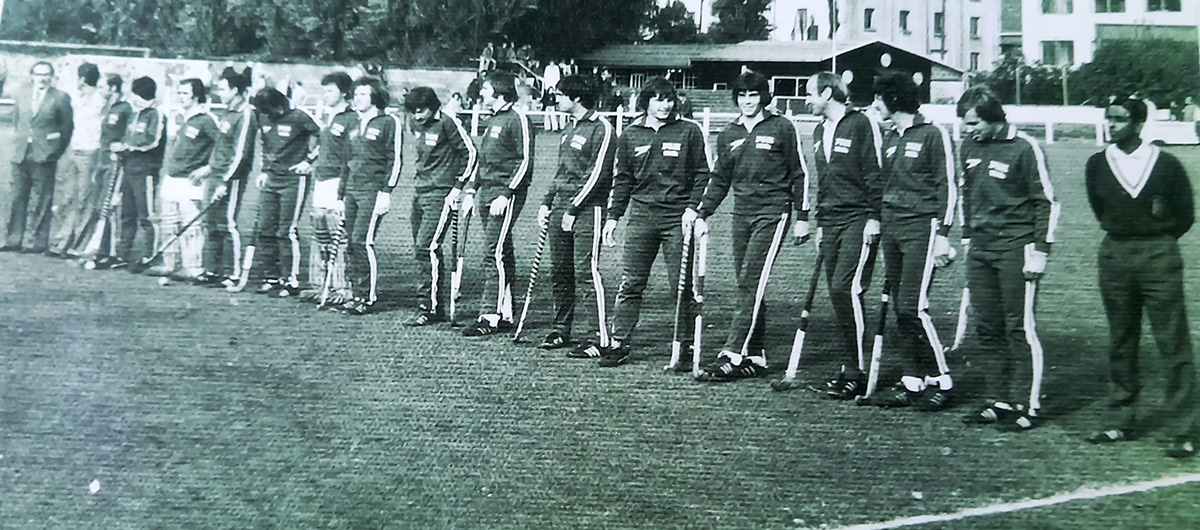
The Europe team line up before the start of the first inter-continental hockey match.
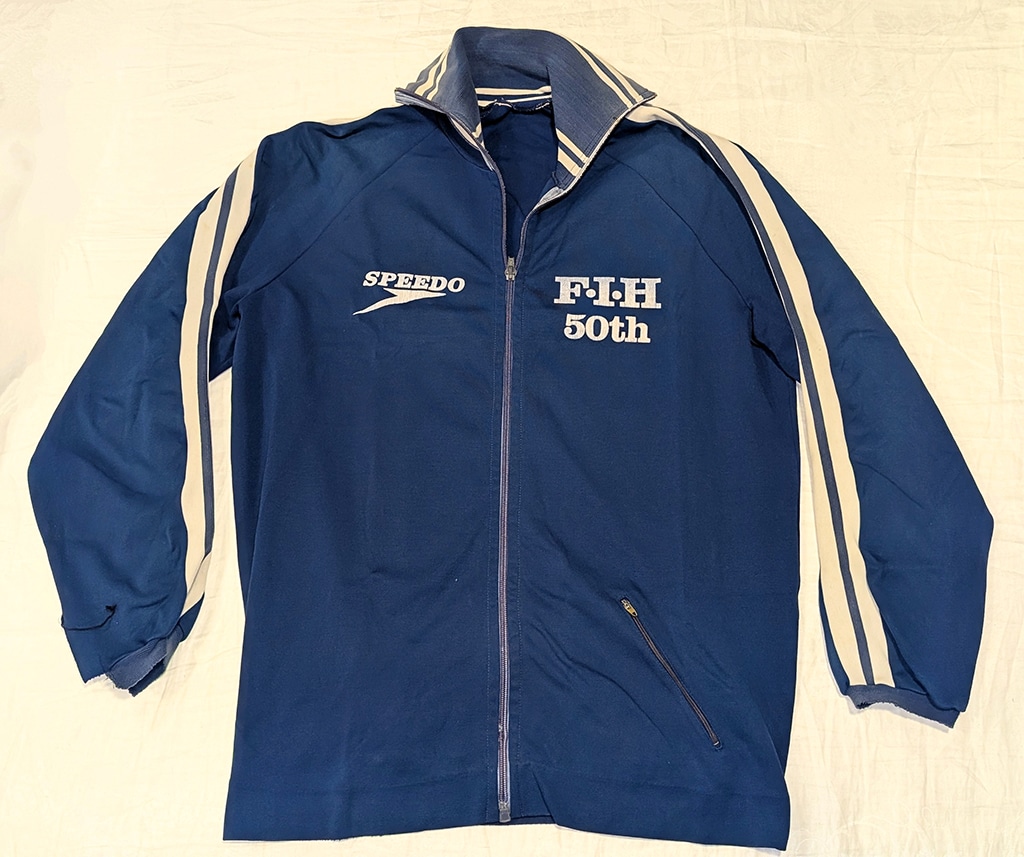
European squad tracksuit from the 1974 exhibition match versus Asia. From the PJ Wilson collection.
The Asia squad was formed of eight players from Pakistan – the strongest Asian nation in recent history having won the 1968 Olympic Games in Mexico City and the 1971 World Cup in Barcelona. India (four), Malaysia (two) and one each from Japan and Iran made up the rest of the side. The Asia team was captained by Ajitpal Singh of India. The manager was AIS Dar (Pakistan) and the coach was also Pakistani, Anwan Ahmad Khan. Notable amongst the Asian team were Ashok Kumar (India), son of the legendary Dhyan Chand but a star in his own right; Islahuddin (Pakistan) “one of the fastest players in the world” and Satokazu Otsuka (Japan), once rated as the world’s leading goalkeeper.

Three of the Asia team featured in a preview article in World Hockey magazine.
All the Asian players had recently competed in the Asian Games, won earlier that month by Pakistan in Tehran. With the support of the Iranian sports authorities, they had trained together during the previous weeks.
In contrast, the Europeans had arrived in Brussels 24 hours earlier and played a match that evening against Belgium (2-2), during which a certain lack of fitness was exposed.
Expectations for the exhibition match were high. Would the powerful combination of Vos (FRG), Freize (FRG), Kaessman (FRG) and Leefers (Netherlands) counter the deft touches and intricate patterns woven by Ganesh (India), Kumar (India), Rasool (Pakistan) and Shahnaz (Pakistan)? Who would win the penalty corner duel between Kruize (Netherlands) and Surjit (India) or Islahuddin (Pakistan)?
Unfortunately, continuous rain fell up to the day of the match and, somewhat naturally, both teams laboured in very soft, grass-pitch conditions to a 0-0 draw. After the game, they each claimed that only the weather prevented them from winning!
Looking back at reports of the time, Europe were probably the better side in the first half but, as their link men faded, so Asia gained ascendancy in the second half.
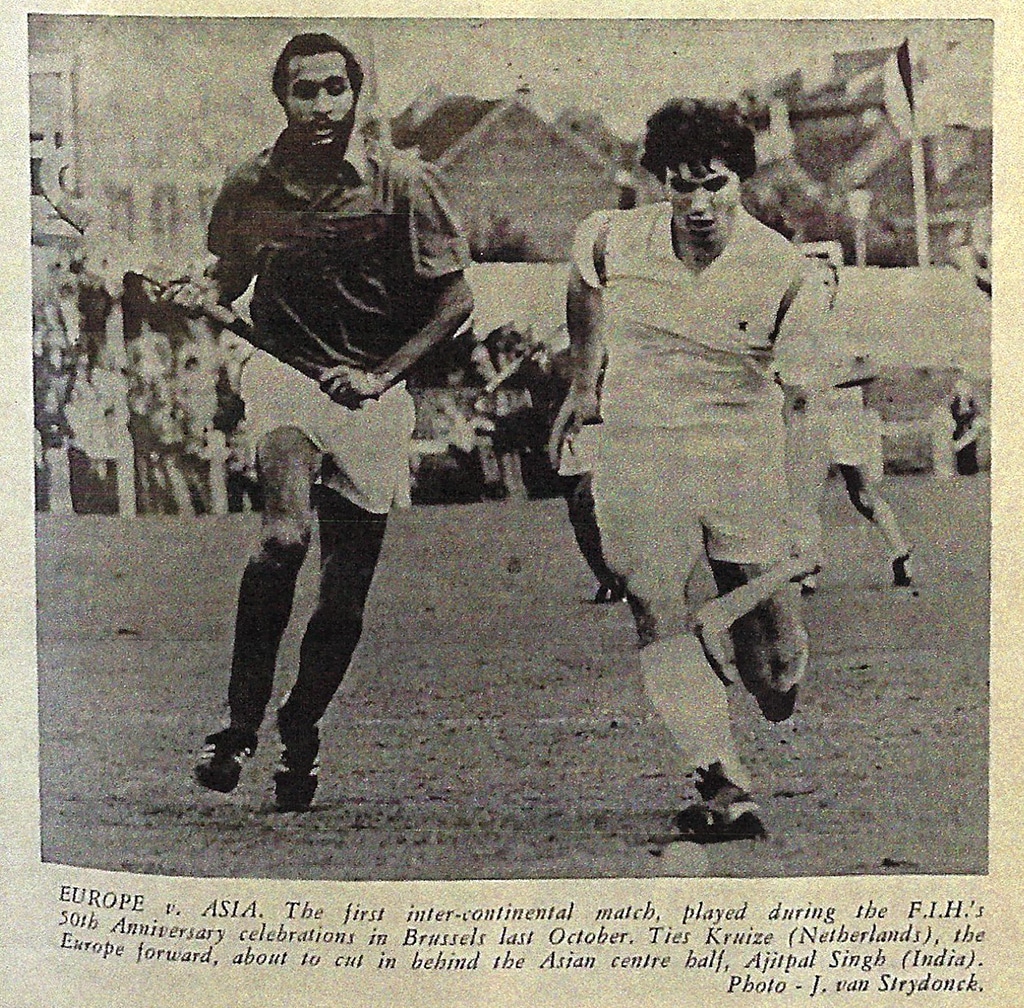
The Europe forward Ties Kruize about to cut in behind the Asia centre-half Ajitpal Singh during the exhibition match in 1974.
The match was played in a sporting manner and was well umpired by H Servetto (Argentina) and G Vijayanathan (Malaysia). The latter commented in a Malaysian newspaper:
“Asian players tend to indulge in individualistic play but, overall, there is not much difference in the European and Asian styles. The Europeans have very skillful players too.”
It is notable that this exhibition match took place only three years after the third Indo-Pak war between Indian and Pakistan in 1971. This was a military confrontation during the Bangladesh Liberation War, which resulted in many atrocities and, ultimately, Bangladesh’s independence from East Pakistan. 12 of Asia’s 15-strong squad were from Pakistan or India. That these players could put aside their countries’ political and religious differences to play together so soon after such tragedy and division is a testament to the unifying power of sport. An apt celebration of 50 years of global hockey governance, even if the match itself didn’t quite live up to expectations.
The Teams
Europe starting XI:
Alberto Carrera (Spain), Michael Peter (Federal Republic of Germany), Horst Drose (FRG), Andre Bolhuis (Netherlands), Dieter Freise (FRG), Francisco Fabregas (Sp), Peter Wilson (Wales), Frans Spits (N), Ties Kruize (N), Uli Vos (FRG), Peter Trump (FRG)
Substitutes:
Maarten Sikking (N), Guy Miserque (Belgium), Werner Kaessman (FRG) and Wouter Leefers (N)
Asia starting XI:
Saleem Sherwani (Pakistan), Islahuddin (P), Virender Singh (India), Ajitpal Singh (I), Harmik Singh (I), Akhtar Shahnaz (P), Abdul Rashid (P), Surjit Singh (I), Ashok Kumar (I), M P Ganesh (I), Satokazu Otsuka (Japan)
Substitutes:
L Fernandes (I), Manzur (P), Munawr-Ruz-Zaman (P), Akhtar Rasool (P), Rama-Krishnan (Maylasia), Samullah (P), Poon-Fook-Loke (M


